Part 4: Oswald in Oak Cliff
The Warren Commission’s description of the origin of the backyard photos relies on a very unreliable narrator. Many critics believe the visual content of the photos is unreliable (i.e. it is a composite). When the Kennedy case was re-investigated by the HSCA, examination of the backyard photos was limited to the question of authenticity. Other pertinent questions, once examined, impeach the unreliable narration adopted by the Warren Commission.
Follow-up questions: If the camera wasn’t Oswald’s, whose was it? If Marina didn’t take the photos, then who did? 1 The answers could lead directly to the plot to frame Oswald, and therefore to the plot to remove Kennedy.
The Kuleshov Effect
In the interest of realizing a scientific materialist understanding of cinema technique, young filmmakers in the new revolutionary Soviet Union conducted a series of visual experiments designed to quantify elements of montage (editing). One of the most famous was conducted by Lev Kuleshov, a twenty-three year old theorist and educator. A medium close-up of an impassive actor was variously juxtaposed with specific images – a plate of soup, a prison gate, a dead child – cutting back to the actor’s impassive face. Viewers of these simple cross cutting experiments invariably read the actor’s always identical blank visage as variously expressing hunger, loneliness, or mourning. The audience would invariably conjure an association, even absent a spatial relationship within the shots (through lighting or scenic consistencies). 2
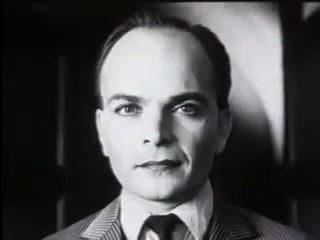 | 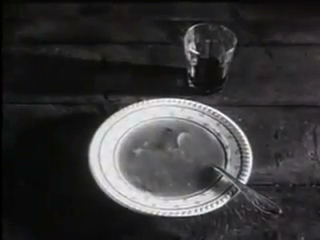  |      |
| HE IS HUNGRY | ||
     | 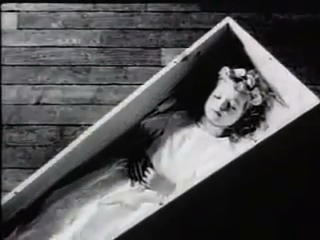  |      |
| HE IS SAD |
The backyard photos, since the Life Magazine cover in 1964, have been presented to the public as a deliberate self-representation by JFK’s future lone-nut assassin Lee Oswald, who interrupted his wife’s household chores on a spring Sunday afternoon so she would snap two photographs, him dressed in black, brandishing firearms and socialist literature. The backyard photos are understood as the self-portrait of a political fanatic, a man preparing for violence, in the service of ideology and his twisted psyche. They are said to be Oswald’s idealized image of himself – the hunter of fascists, the man ready for anything. 3
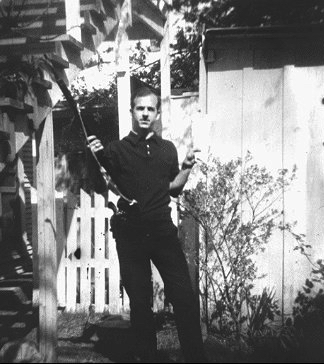   | 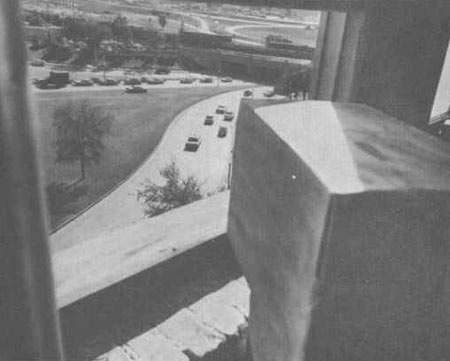  |    |
| FANATIC LONE-NUT KILLER | ||
   | 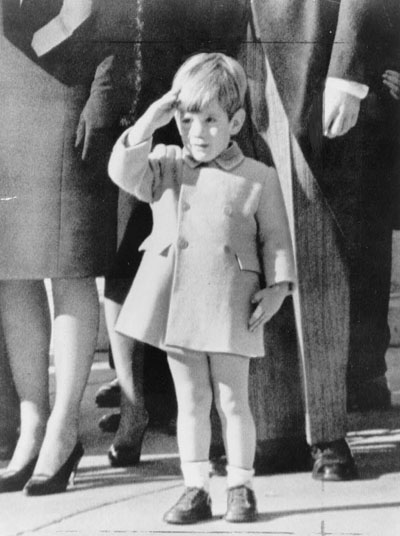  |    |
| DESTROYER OF INNOCENCE |
Should it be understood that Marina Oswald did not snap these photos at her husband’s insistence, the context and interpretation of these photos must transform. Are the backyard photos instead the portrait of a political provocateur, posing as part an operation to discredit organizations of the left? Are the backyard photos some kind of in-joke, a trophy from a modestly successful false flag attempt? Hunter of fascists ha-ha-ha!
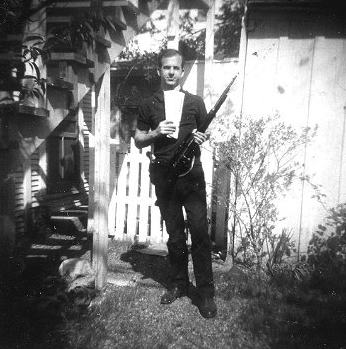  |
A Backyard Photo Was In Possession Of Dallas Police On The Evening of November 22
An internal FBI memo dated February 25, 1964, generated as part of the FBI’s multi-city investigation into the leak of backyard photo 133-A to the media, describes an interview with Jerry O’Leary, Jr., a reporter for the Washington Evening Star. O’Leary confirmed to agents he had arrived in Dallas on the evening of November 22, 1963 and “advises as follows: Deputy Sheriffs and Dallas Police Department detectives, he believes, arrived at the Payne home in Irving ... O’Leary understands that the officers started searching, Mrs. Payne objected, whereupon they told her they would get a search warrant. O’Leary thinks these officers took photographs back to the police department or the Sheriff’s office which they obtained in the Payne residence from Marina Oswald. O’Leary says he believes the photograph carried by “Life” on its 2-21-64 issue was among those taken by the police. O’Leary says that either late the night of 11-22-63 or the morning of 11-23-63, he saw a copy of the photograph in the hands of a police officer” (FBI DeLoach to Mohr 2-25-64)
O’Leary was not in attendance at the Paine home during the initial search, and his information of what happened there is not accurate. Ruth Paine, according to all in attendance, never objected to the police presence and allowed full access. The legal issue of a search warrant, as officially explained, rests on the distinction that officers could access visible objects as they moved through the residence, but a warrant was required to open sealed items such as the seabags and suitcases in the garage. O’Leary may have received or overheard incomplete and/or inaccurate background information, but his seeing “the photograph carried by Life” on the Friday night or early Saturday morning “in the hands of a police officer” is important and has corroboration.
On March 17, 1964 Michael Paine provided testimony to Warren Commission attorneys Wesley Liebeler and Norman Redlich. The following exchange was recorded:
Mr. LIEBELER – Did the FBI or any other investigatory agency of the Government ever show you a picture of the rifle that was supposed to have been used to assassinate the President?
Mr. PAINE – They asked me at first, the first night of the assassination if I could locate, identify the place where Lee was standing when he was holding this rifle and some, the picture on the cover of Life.
Mr. LIEBELER – Were you able to?
Mr. PAINE – I identified the place by the fine clapboard structure of the house.
Mr. LIEBELER – By the what?
Mr. PAINE – By the small clapboard structure, the house has an unusually small clapboard.
Mr. LIEBELER – What did you identify the place as being?
Mr. PAINE – The Neely Street address.
Michael Paine confirms the observation of Jerry O’Leary Jr., that Dallas Police had in their possession, on Friday night November 22, 1963, a copy of a backyard photo, many hours before these photos were officially discovered.
There is a third confirmation. In a typed version of notes taken by Dallas Police Homicide Captain Will Fritz during his interrogations with prisoner Lee Oswald, the following information covers midday Saturday November 23: “Oswald was placed back in jail at 11:33 a.m. At 12:35 p.m. Oswald was brought to the office for another interview with Inspector Kelley and some of the other officers and myself. I talked to Oswald about the different places he had lived in Dallas in an effort to find where he was living when the picture was made of his holding a rifle which looked to be the rifle we had recovered. This picture showed to be taken near a stairway with many identifying things in the back yard ... Mr Paine had told me about where Oswald lived on Neely Street. Oswald was very evasive about this location.” (CE2003)
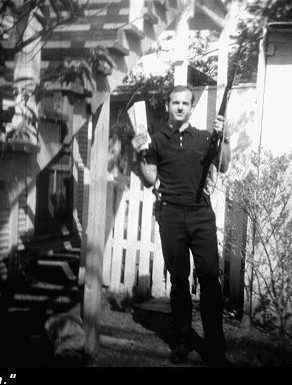  | 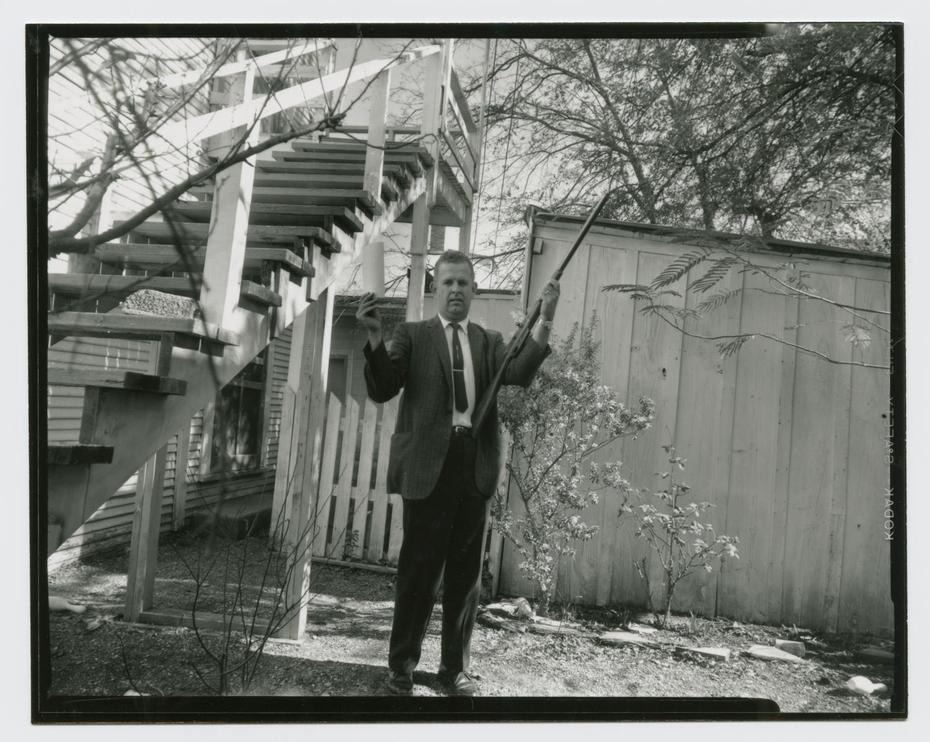  |
The Dallas police had at least one version of a backyard photo long before the photos were officially found mid-afternoon Saturday. In the Fritz typed notes he adds: “We found later that this was the place where the picture was made.” The Dallas police would go to 214 West Neely Street on November 29, 1963 to take photos of the property, including a replication of the Oswald pose identified as backyard photo 133-C, supposedly unknown, beyond certain Dallas police officers, for another dozen years. (CE712) This demonstrates the existence of 133-C was not some dark secret known only to a few. It is highly unlikely backyard photo 133-C could have been withheld from the FBI or the Secret Service. The Secret Service, in the person of Forrest Sorrels, supervised the November 29 photo recreations. 4 There is no acknowledgment of the existence of 133-C anywhere in the official record generated in 1963/1964, other than the recreated pose. The withholding of 133-C from the official record appears a deliberate decision, involving a tacit understanding between the Dallas Police, the FBI, and the Secret Service. Why would this happen?
A speculation: 133-C was the backyard photo in possession of the Dallas police on the evening of Friday November 22, 1963. The reason for its withholding: the means by which it came into the hands of the police was problematic, by origin or method.
Looking again at Jerry O’Leary’s information, the suggestion is made the lack of a search warrant might have compromised evidence gathered that first afternoon, though it is also said the photographs were “obtained” directly from Marina Oswald. The information regarding the search warrant is not correct, and if Marina directly passed photographs to the attending officers, the incident was not mentioned in any reports or recollections. Perhaps O’Leary was given or overheard something like a cover story. The photo may well have been “obtained” from a location or source other than the Paine household, and this source could not be rationalized within the emerging lone-nut paradigm. Once 133-A and 133-B came into the record on Saturday afternoon November 23, in convenient fashion, 133-C could be quietly shelved.
The complete lack of curiosity concerning photograph 133-C on the part of the HSCA – the government panel which first became aware of this photo – supports a notion that there was something decidedly fishy about this photograph, and the fishiness is not a matter of content, which is effectively the same as the other two backyard photos in the record. The HSCA took forty pages of testimony from Dallas police officer R.L. Studebaker concerning the many copies made of all three backyard photos in the Dallas Police Department Photography Laboratory, but the provenance of 133-C was not clarified. 5
A closer look at the context and circumstances of these photographs may help establish the range of possibility which could explain the backyard photographs.
Oswald the "Marxist"
In October 1962, the Dallas FBI closed its Oswald file started the previous June, when Oswald returned from the Soviet Union. Five months later, the file would be reopened, supposedly after learning Oswald had subscribed to the Communist Party USA newspaper The Worker. As John Newman describes in Oswald and the CIA, the FBI’s reasoning appears flawed. Oswald maintained contacts and subscriptions with numerous left and radical-left organizations continuously since his return, and the FBI had no reason not to be aware of this. Oswald began his subscription to The Worker on August 5, 1962 and he had contacted the Socialist Worker’s Party, a listed subversive organization and publisher of The Militant, a week later, not long before his FBI file was rendered “inactive”. A copy of both The Worker, and The Militant are featured in the backyard photos.
Oswald communicated with left-wing organizations as early as fifteen years of age, and was known to espouse left-wing sentiments while with the Marines. When he attempted to renounce his American citizenship in Moscow, he claimed: “I am a Marxist” (CE910). Consul Richard Snyder recalled “strong impression he used simple Marxist stereotypes without sophistication or independent formulation” (CE909). The same impression was expressed by others acquainted with Oswald. 6 While in the Soviet Union, Oswald did not associate with Marxist or communist institutions, and there is little to indicate he engaged in Marxist analysis or discussions with his friends in MInsk. Oswald’s Marxist / leftist persona appears exclusively to an American audience, first in the Marines, then to American officials and reporters in Moscow, and then again on his return to Fort Worth in 1962.
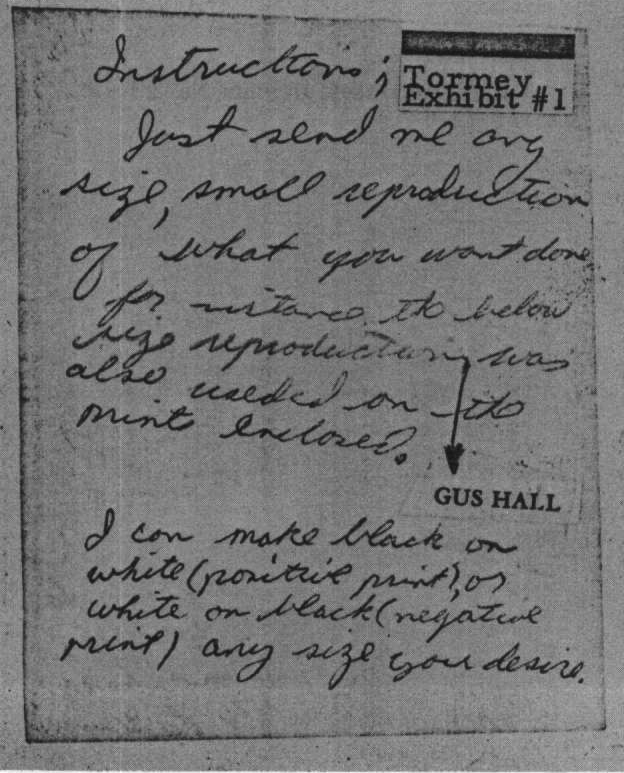  |
On August 26, 1962 Oswald ordered pamphlets on Trotsky from Pioneer Publishers, associated with the Socialist Worker’s Party. He applied for SWP membership at the end of October (Dobbs Exhibit 9). On December 6 he steps up his prospective involvement by offering his skills in “blow-ups, reversals and reproduction work” gained at his employer Jaggars-Chiles-Stovall to the SWP’s New York office (Dobbs Exhibit 12). He makes a similar offer to the Hall-Davis Defense Committee, linked to the CPUSA (Tormey Exhibit 1). On December 15 Oswald subscribes to the The Militant. 7
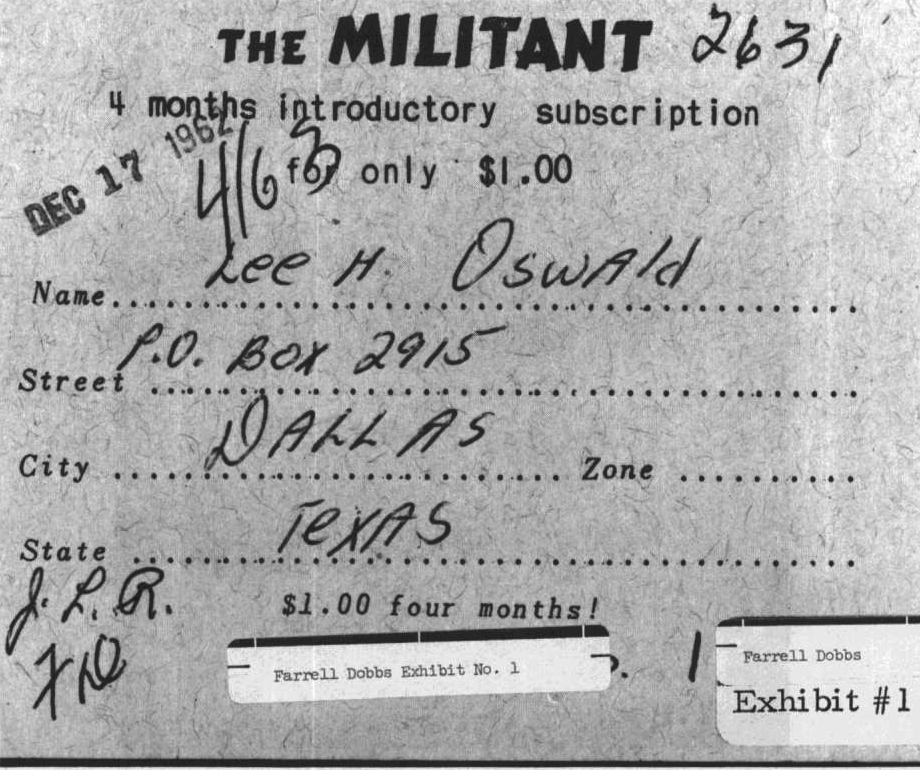  |
If Oswald’s Marxist tendencies had been more informed, his subscription and party membership activity should have been limited to one or other of Communist Party USA or the Socialist Worker’s Party. Factional splits and philosophical differences had led to bitter divisions between the two organizations. Oswald’s correspondence through 1962 and 1963 with various left-wing outfits shows him apparently unaware or unconcerned with these splits. Oswald assumed a personal stance, articulated during social occasions at the time, that he disliked both the Soviet and American political systems and instead endorsed Marxist analysis and ideals. Yet in Texas and Louisiana, in 1962 and 1963, he worked and socialized with, for the most part, persons of the right. 8 Oswald’s Marxist identity should be considered a front, and his communications with left-wing organizations insincerely motivated.
Oswald in Oak Cliff
Near the beginning of October 1962, George de Mohrenschildt’s daughter Alexandra and her husband Gary Taylor were invited to a modest gathering held at Oswald’s Mercedes Street apartment in Fort Worth. For the Taylors, this was their first meeting with the Oswalds, and as they were not Russian speakers, the interaction with their hosts was limited. Even so, as the occasion concluded a few hours later, Marina Oswald gathered clothes and her infant daughter, and joined the Taylors for the drive back to their apartment in Dallas, where she would then stay for almost a week. One rationale for this holds that Marina complained of spousal abuse to the guests, so the removal to the Taylor home was a hastily conceived reaction. Alexandra Taylor, in contrast, told the FBI on November 30, 1963 that Marina’s stay had been arranged by her father some time before (CD60). Gary Taylor’s Warren Commission testimony also confirmed that it was a prearranged event orchestrated by George de Mohrenschildt. 9
Lee and Marina would be separated throughout October 1962, commencing a year of absences and separations, when Lee Oswald’s movements and activities assume a murky or unknown character. On his own, Oswald stayed at the Mercedes apartment until October 8, when he vacated and quit his job at Leslie Welding the same day. Where he stayed the following week is unknown. He rents the (later infamous) Post Office Box 2915 on October 9, and has several appointments with the Texas Employment Commission. On Friday October 12, Oswald is hired by the typographic firm Jaggars-Chiles-Stovall. Oswald checks into the Dallas YMCA on October 15 and stays there until October 19, when he relocates to the Coz-I-Eight apartments on North Beckley Street in the Oak Cliff neighborhood of Dallas. For the rest of his days in Dallas, Oswald would reside at addresses closely clustered, within a ten block radius, in Oak Cliff. 10
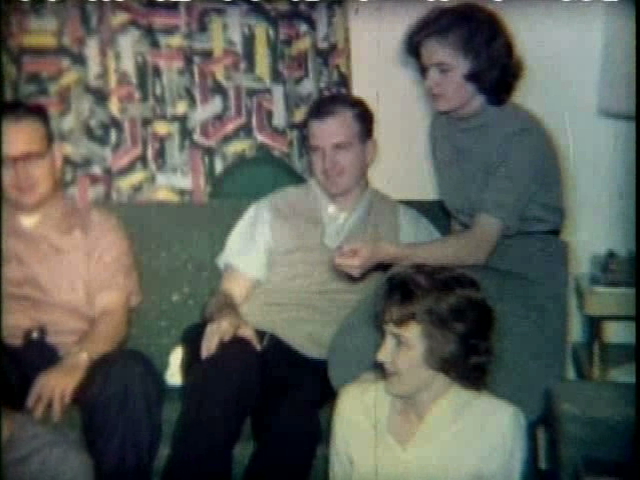  |
Jeanne de Mohrenschildt, referring to the Dallas-Fort Worth Russian community, would tell the Warren Commission: “Lee insisted for some particular reason to live very, very far from everybody, from all these people. They lived in Oak Cliff – God knows where from us ... Why did he live so far? ... Why wouldn’t they take a little place near us, it will be much easier for me to help her. He had some reasons to live far away. I don’t know if anybody else mentioned that to you. That was everybody’s impression. For some particular reason, he moved all the way out” (WC testimony April 24, 1964).
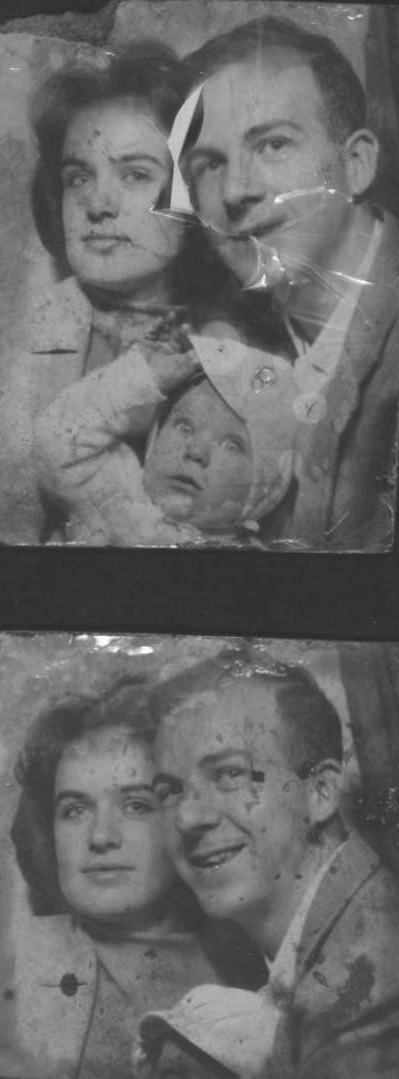  |
On November 3, 1962 Gary Taylor would help rent a trailer for Oswald, then assist in the relocation of Marina and June, with belongings, from Fort Worth to a new home at Apartment 2 – 604 Elsbeth, which Lee had arranged the week before. 11 Three days later, Marina moved out, allegedly the result of a bad argument sparked by her conversation with the wife of the Elsbeth apartment’s building supervisor. Marina and June shuttled between three White Russian homes for two weeks before another reconciliation with Lee was achieved on November 18. On November 22 the Oswalds attended a Thanksgiving dinner hosted by his brother Robert in Fort Worth. Several snapshots of the Oswald family were taken at the Fort Worth bus depot’s Photo-mat booth, the only specific instance of “family-type snapshots” from the period that Marina could later recall.
The Oswald’s domestic situation is notable for its instability throughout the autumn of 1962, coinciding with George de Mohrenschildt’s efforts as their benefactor. Marina Oswald would say in a letter to the Soviet Embassy on December 31,1962 “we change address often because my husband changes work and for other reasons” (emphasis added). She shares with the Embassy her new mailing address “Box 2915, Dallas, Texas” (CE986). 12
The February Hand-Off
Even though Lee Oswald’s unemployment in October 1962 lasted only four days, George de Mohrenschildt was known to lament “we‘ve got to find Lee a job.” The kind of job he was likely referring to was as free lance informant, investigator and possibly provocateur – activity associated with industrial security and/or private firms and organizations linked to federal intelligence or police agencies (such as Guy Banister’s outfit in New Orleans). 13 This is the milieu believed to have motivated otherwise inexplicable activity on the part of Oswald throughout the year 1963. Introductions or inquiries on Oswald’s behalf were made by de Mohrenschildt in the autumn of 1962 to persons such as Admiral Chester Bruton, of Collins Radio, and Max Clark, overseeing industrial security at General Dynamics.
Oswald had extra money available to him in December 1962 / January 1963, not huge amounts but enough to pay the remainder of the State Department loan which assisted his return to America. A few months later, allegedly, Oswald was able to purchase the mail-order guns under the name Hidell, amounting to just over $50, representing a week’s salary. 14
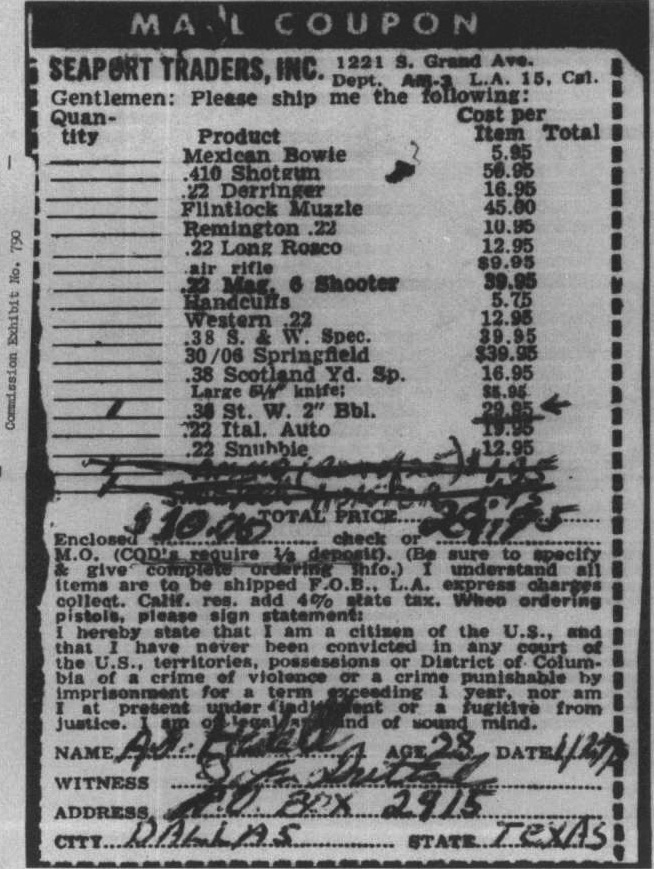  | 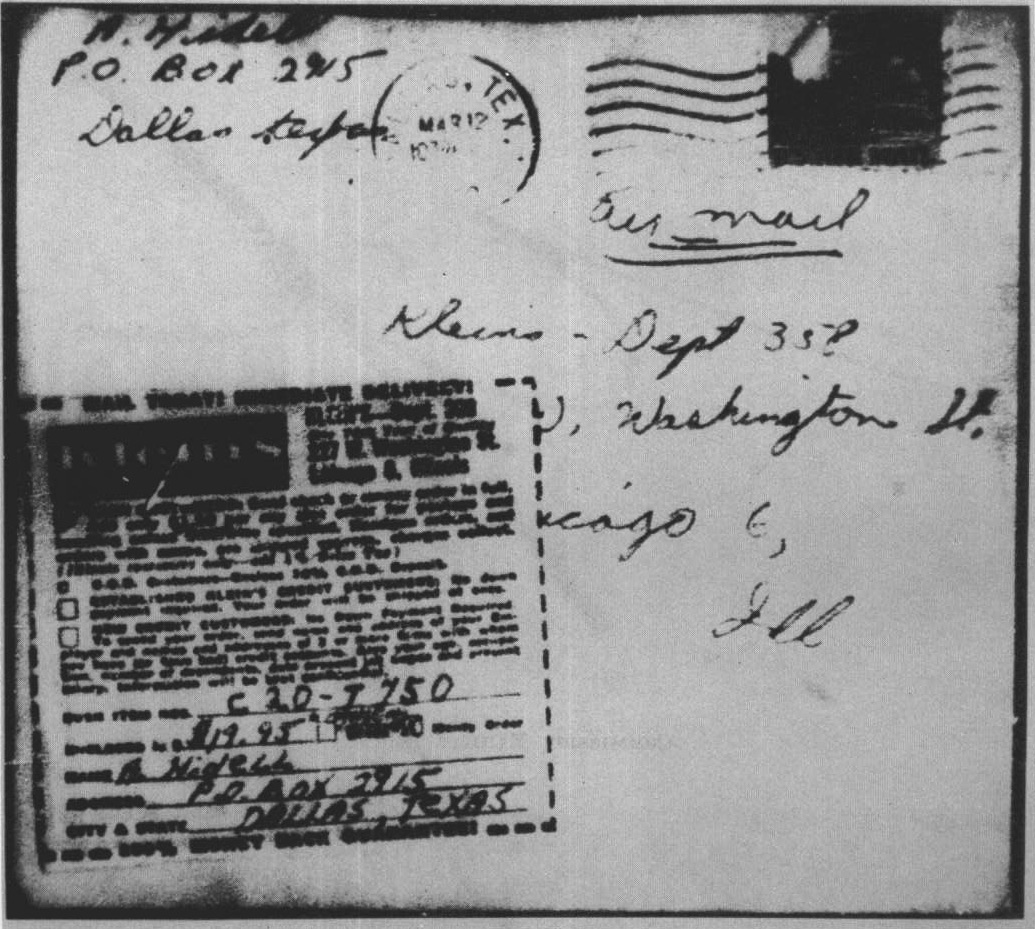  |
In 1963, not only did Oswald’s Fair Play For Cuba activity coincide with active programs by the FBI and CIA directed against the organization, he also (allegedly) ordered interstate mail-order firearms from Klein’s and Seaport Traders when both of these firms were also targeted by federal investigations. Peter Dale Scott notes: “in 1963 Seaport Traders and Klein’s Sporting Goods were being investigated, by the ATF unit of the U.S. Treasury’s Internal Revenue Service, as well as by Senator Dodd’s Juvenile Delinquency Subcommittee. Treasury and the Committee sought to demonstrate the need for more restrictive federal legislation to control the burgeoning mail-order traffic in firearms” (Deep Politics, Chapter 15).
In early February 1963, George de Mohrenschildt introduced Oswald to Volkmar Schmidt, a German oil geologist employed in Dallas by Magnolia Oil. During a small dinner party held at de Mohrenschildt’s home, a political and philosophical conversation ensued between Schmidt and Oswald lasting two hours, during which Oswald exhibited traits similar to the Warren Commission’s lone nut psychological profile. 15 Schmidt claimed Oswald seemed to him a man “desperate, spiritually, totally desperate ... His determination to leave an imprint in history was just incredible.” After redirecting Oswald’s spiritual desperation toward an antipathy to the far-right positions of General Edwin Walker, Schmidt came to believe this conversation triggered Oswald’s alleged obsession with Walker, which may have resulted in a failed assassination attempt two months later. 16
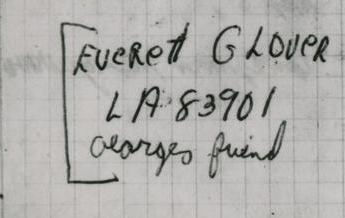  |
| From Oswald’s address book |
Schmidt decided to arrange his own get-together for Oswald, at the house he shared with other Magnolia Oil employees including Ruth and Michael Paine’s friend Everett Glover. Schmidt described the event as one which he hoped could assist getting Oswald “out of his shell”, though he would not personally attend. Invited guests included the de Mohrenschildts and the Paines. 17 The Magnolia Oil party occurred on Friday night, February 22, 1963. Ruth Paine met Marina Oswald at this event, beginning a rapid transition for the Oswalds – from dependence on the generosity of the de Mohrenschildts to dependence on the generosity of the Paines.
A few days previously, on February 17, Marina Oswald had written the Soviet Embassy, apparently at her husband’s insistence, to request assistance in returning to the USSR. This letter differed markedly from Marina’s earlier genial communications with the Embassy, due to its specific pleading and urgency. 18 As their friendship took root, Ruth Paine would go into something of a panic as Marina spoke of Lee’s insistence she return to Russia. Her first offers for Marina to stay with her in Irving are made in response, a persistent theme through the year. Earlier, in November 1962, the Dallas area Russian community had been canvassed to find a place “where (Marina) could live with somebody for 2 or 3 months.” 19
214 West Neely Street
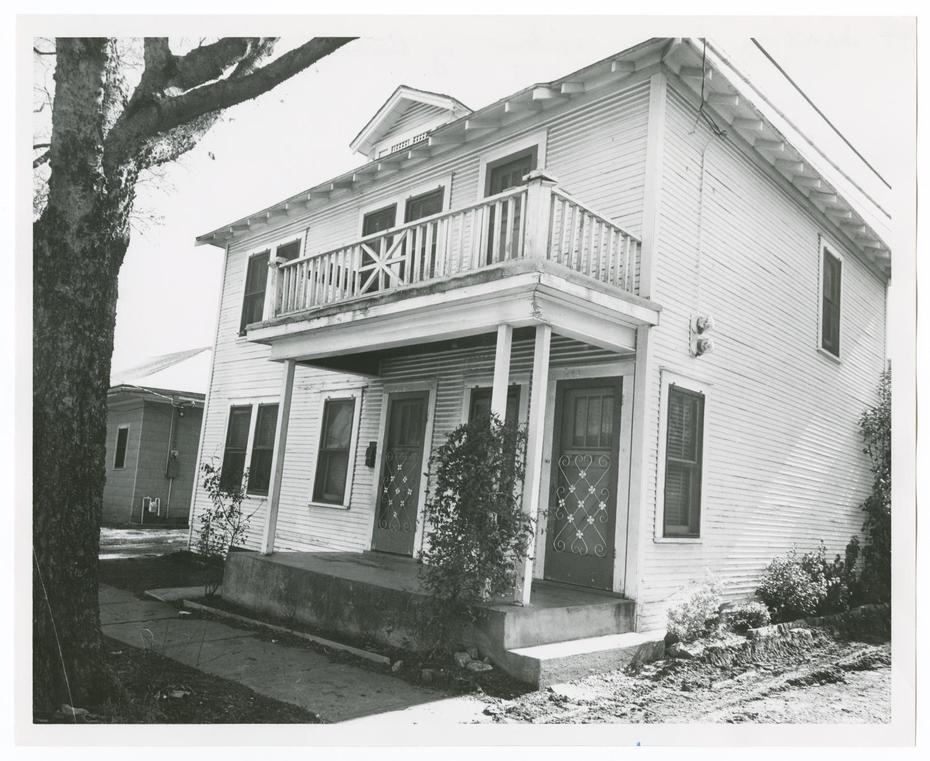  |
The Oswalds moved again soon after the Magnolia Oil party, on March 3, 1963 to 214 West Neely Street, a short distance away. After moving to this address, Oswald was said to have begun surveillance of General Edwin Walker’s residence and ordered the rifle from Klein’s Sporting Goods. At this address the backyard photos were said to have been taken, followed by Oswald’s supposed assassination attempt on General Walker. Notes taken by Dallas Police Homicide Captain Will Fritz during Oswald’s interrogations indicate Oswald was distinctly evasive about this location. During her testimony to the Warren Commission, Marina allowed that Oswald’s behavior had changed in this time:
Mrs. OSWALD. ... the later time he was more excited and more nervous but it was quite a contrast between the way he was in Russia.
Mr. RANKIN. By the later time that you just referred to what do you mean? Can you give us some approximate date?
Mrs. OSWALD. When we went to Neely Street. (WC, February 3, 1964)
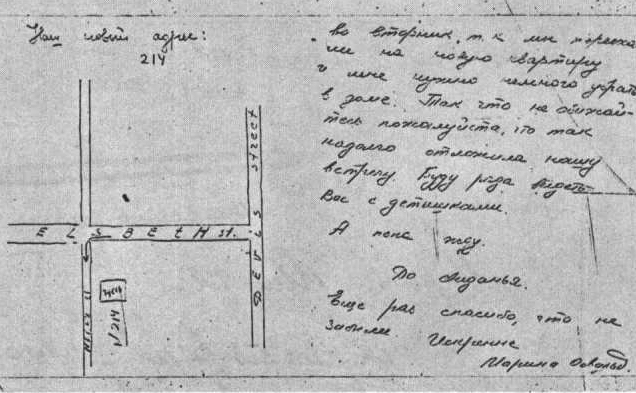  |
| CE404. In a letter dated March 4, 1963, Marina Oswald drew Ruth Paine a map to 214 Neely Street |
Known visitors to this address included a few members of the White Russian community, the de Mohrenschildt’s once or twice, Michael Paine once and Ruth Paine several times, and also Gary Taylor, George de Mohrenschildt’s now estranged son-in-law. He came by the apartment one afternoon, when Lee Oswald was at work.
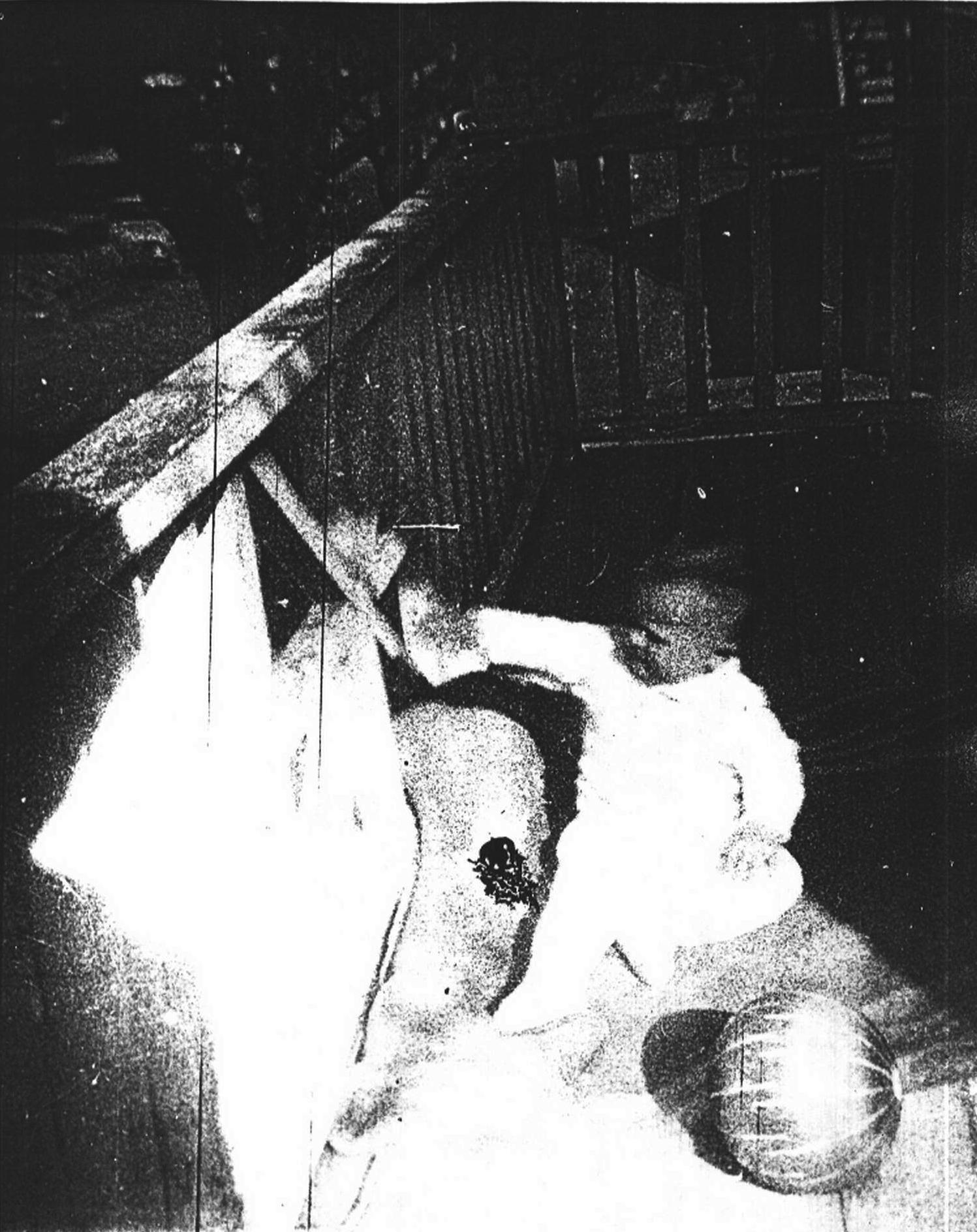  |
Mr. JENNER. Why did you go there?
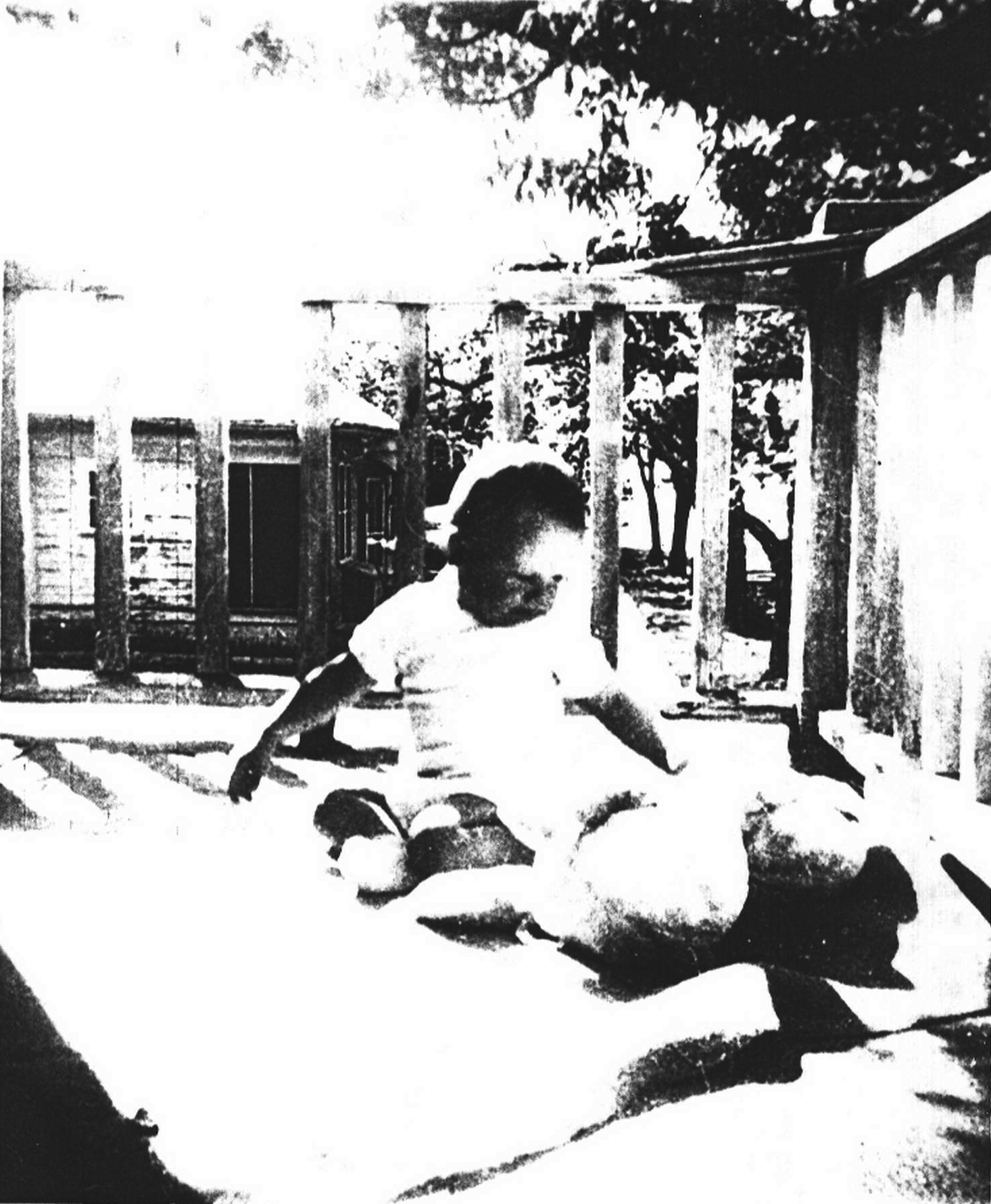  |
| Gary Taylor: “Some of the baby's toys – a ball and something or other – were out there on this porch.” |
Mr. TAYLOR. Just for a friendly visit. Marina was at home. She – her English had improved enough for her to get across to me a few ideas ... I did inform Marina of my impending divorce and – uh – in other words, telling her that Mrs. Taylor and I were no longer living together and we had separated.” (WC testimony March 25, 1964)
Taylor was able to recall a specific image: “this apartment in question had a small balcony on the front of it and I remember the door was open and I thought what a nice place for the baby to play and some of the baby's toys – a ball and something or other – were out there on this porch.”
Early during Taylor’s testimony, Commission counsel Albert Jenner established:
Mr. JENNER. During the time you had your interest, which you still may have, in – what did you say – photographing?
Mr. TAYLOR. Yes ...
Mr. JENNER. Are you an amateur camera fan?
Mr. TAYLOR. Just a little bit. I try to carry it on as best I can ...
His former wife Alexandra (Mrs Donald Gibson) confirmed “he was working on and off with a photographer ... ” (WC testimony May 28, 1964). In light of Gary Taylor’s photography interest, the Commission’s interest in establishing this hobby, and his specific recollection of June Oswald on the Neely Street balcony – this may establish the origin of the Neely Street balcony photographs (and assist in emphasizing Lee Oswald did not take any “family-type snapshots” while in America 1962-63).
Oswald and the Walker Shooting
A Dallas Times Herald story titled Walker Target of Sniper’s Blast, dated Thursday April 11, 1963, describes the aftermath of the apparent assassination attempt directed at General Walker (CD1019 pp. 4-5). Walker is portrayed as upbeat and on-message:
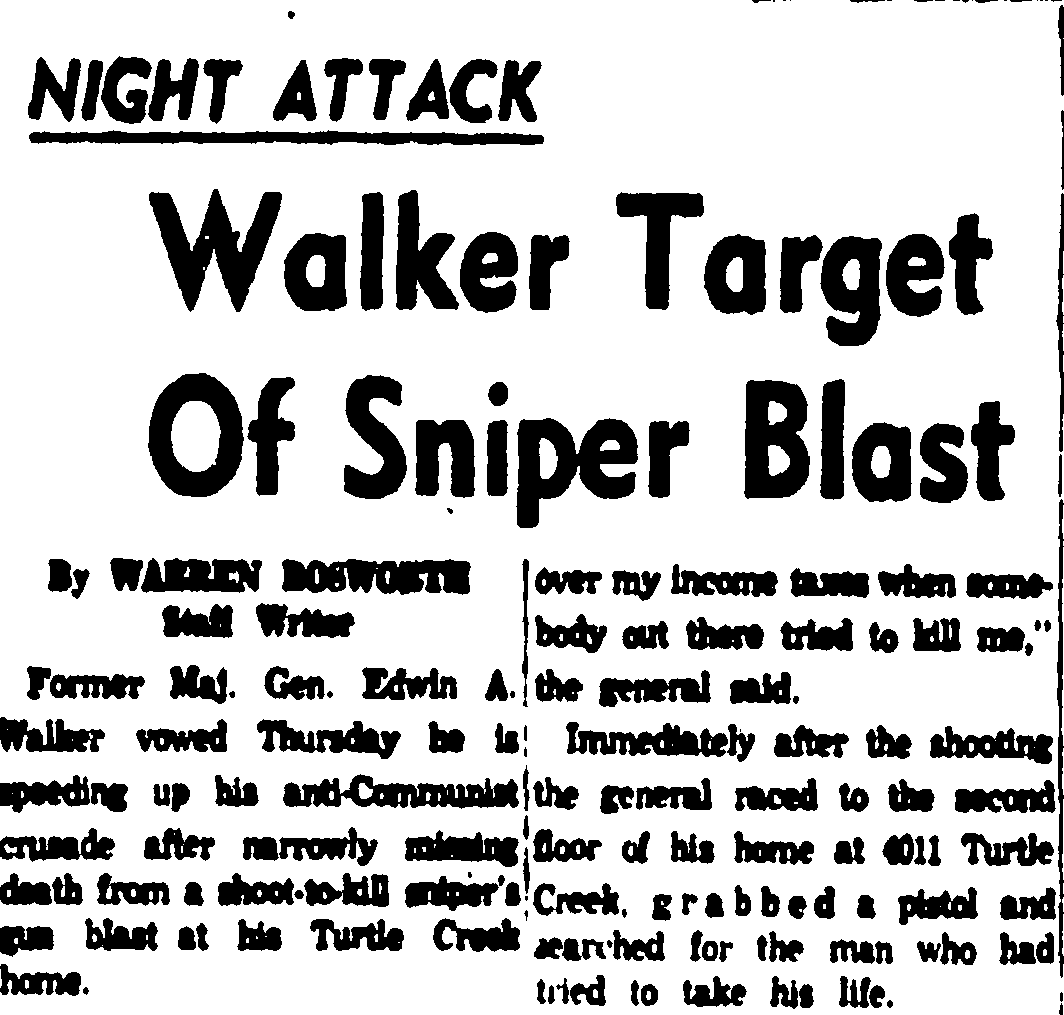  |
| “The Kennedys say there’s no internal threat to our freedom,” the general said with a laugh, nodding to the gaping hole in the wall. Gen Walker said the shooting was not going to slow him up in any way from carrying out his fight against Communists at home and abroad. “The shooting here is going to speed me up. You know I said ... that the front lines were right here at home – in Dallas,” he said. |
This assassination attempt, on the immediate heels of Walker’s cross-country tour with the Christian crusader Billy James Hargis, had an element of convenience in that it underscored Walker’s message of vigilance, despite the absence of suspects. Walker could be portrayed as patriotically filling out his tax forms, reacting bravely to the shot, then eschewing medical care so he could continue with his taxes. Viewed through a cynical lens, one might wonder if this was really an assassination attempt at all.
If Oswald was involved in this supposed assassination attempt against General Walker, and there’s a chance he was, then the circumstances would certainly bear little to no relation to the stories told by Marina Oswald and adopted by the Warren Commission. Marina’s Walker stories portray Oswald as erratic, irrational, and prone to panic. This flies in the face of the common perception of Oswald as calm and collected whatever the circumstance. 20 The Warren Commission’s acceptance of Oswald as the lone would-be assassin of Walker in turn disavows sightings of multiple persons surveying Walker’s residence ahead of the shooting, and multiple persons fleeing the area immediately after the shot was fired.
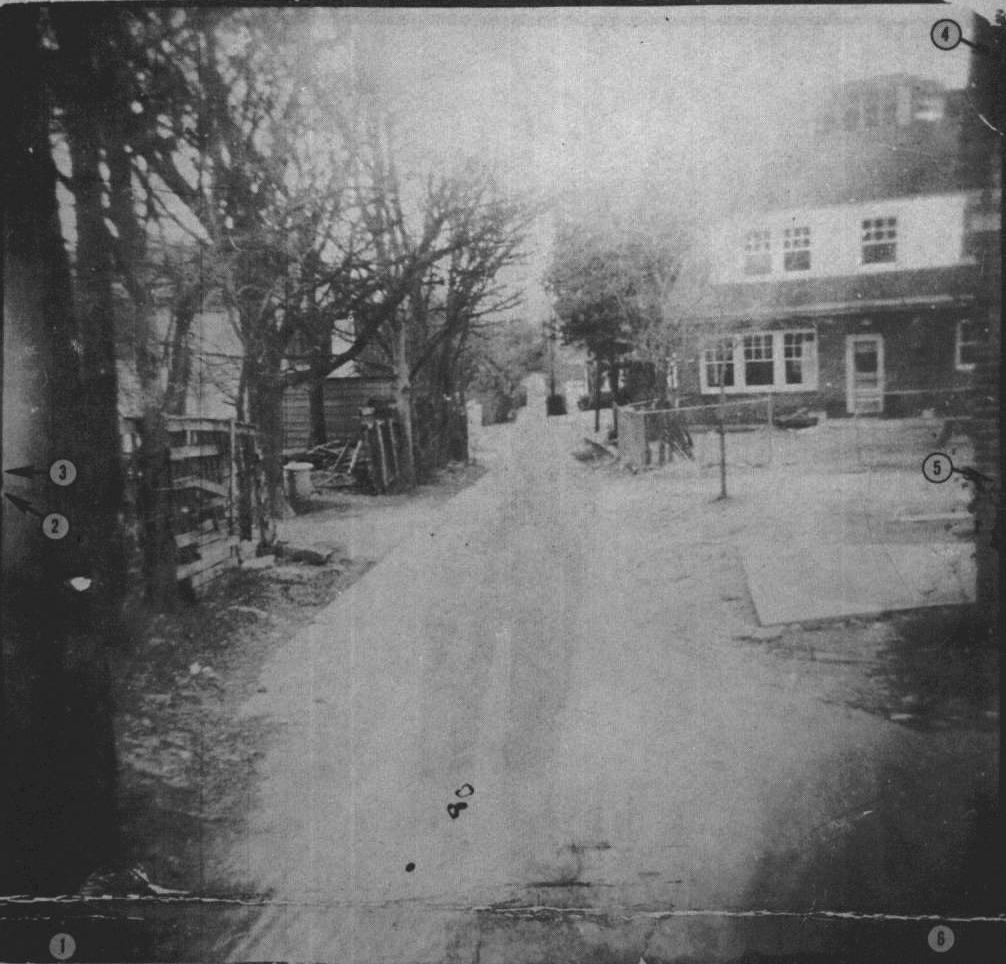  | 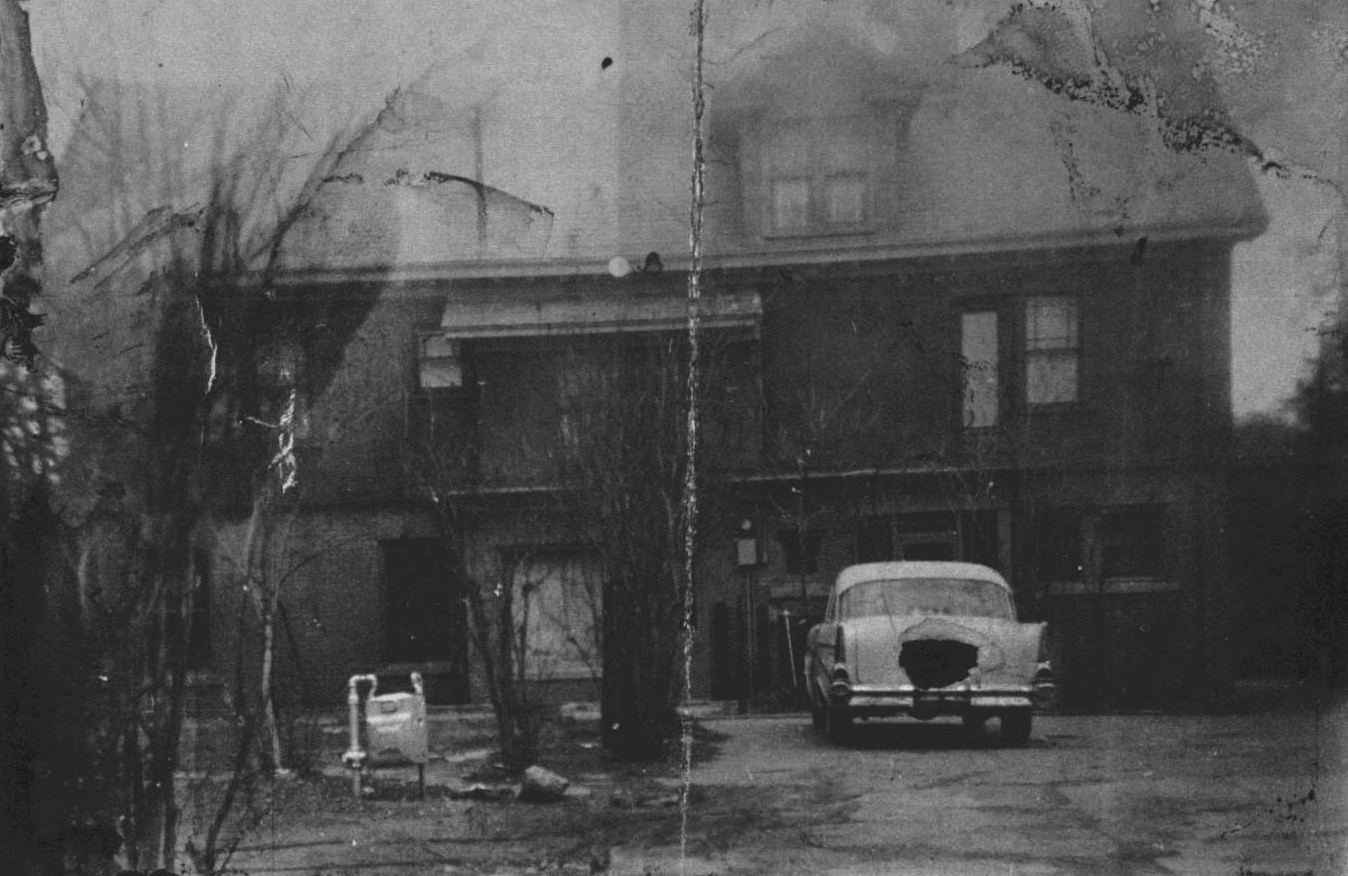  |
Whatever the true circumstances, Oswald is linked to the Walker incident at least by association, since one of the so-called surveillance photos of the Walker residence was identified as having been taken with the same Imperial Reflex camera responsible for the backyard photos. 21 The Walker surveillance photos would be discovered among Oswald’s possessions at Ruth Paine’s home.
Researcher Dick Russell interviewed Walker for his book The Man Who Knew Too Much, and was told a private investigation revealed brothers Larrie and Bob Schmidt may have connected with Oswald and may have been responsible for the shooting at Walker’s home. 22 The Schmidt brothers were far-right political activists, part of a scene described by Peter Dale Scott as a “Minutemen-Cuban exile-General Walker milieu supported by H.L. Hunt.” Oswald the Marxist would have no business making friends with such persons. The paths of Oswald, Larrie Schmidt and General Walker would cross again in the autumn of 1963. Schmidt and Walker tie back to Munich, where a right-wing newspaper would print a story on November 29, 1963 claiming Oswald was responsible for the Walker assassination attempt. 23 Marina Oswald began relating her version of the alleged Walker attempt four days later on December 3, 1963.
The Warren Commission corroborated Marina Oswald’s version with testimony from the de Mohrenschildts, focused on a supposed trip one night to Neely Street to present an Easter toy for infant June. In one version of this story, Marina Oswald takes Jeanne de Mohrenschildt on a tour of the Neely Street apartment and the rifle is observed, prompting George to joke that Oswald could have been Walker’s would-be assassin. In the other, de Mohrenschildt makes the Walker joke as they are greeted at the door. Jeanne de Mohrenschildt was nervous as she testified about this visit, and she implied her visit to 214 West Neely actually occurred on a different occasion.
Mr. JENNER. Was it upstairs or downstairs?
Mrs. De MOHRENSCHILDT. Upstairs. There was a little terrace, and a big tree growing right next to the terrace.
Mr. JENNER. Had you been there before?
Mrs. De MOHRENSCHILDT. No.
Mr. JENNER. That is the first time you had ever been there?
Mrs. De MOHRENSCHILDT. I don't remember. Maybe I was. I don't think so.
Mr. JENNER. All right … Now, just relax –
Mrs. De MOHRENSCHILDT. I am trying to think hard, because every little fact could be important.
Mr. JENNER. But you are excited. Relax, and tell me everything that occurred, chronologically, as best you can on that occasion. You came to the door and either Marina or Oswald came to the door, and you and your husband went in the home?
Mrs. De MOHRENSCHILDT. That is right.
Mr. JENNER. Then, go on. Tell me about it.
Mrs. De MOHRENSCHILDT. And I believe from what I remember George sat down on the sofa and started talking to Lee, and Marina was showing me the house that is why I said it looks like it was the first time, because why would she show me the house if I had been there before? (WC testimony April 24, 1964)
When Jeanne de Mohrenschildt had been interviewed by a representative of the State Department in Haiti in early December 1963, she claimed to have seen a rifle in Oswald’s possession in the autumn of 1962 (State Department airtel December 8, 1963). Marina Oswald first described showing a rifle to Jeanne de Mohrenschildt at 214 West Neely Street during an FBI interview December 11, 1963, but this story does not mention it being nighttime or that Oswald and George de Mohrenschildt were also there (CE1403). Questioned later the same day, Marina told of an occasion when George de Mohrenschildt visited and made a joke about Oswald shooting Walker, but Jeanne’s presence and observation of the rifle is not mentioned. The Warren Commission, for its part, apparently did not notice that the rifle is allegedly seen inside a small room elsewhere described as Oswald’s secret sanctum, a room said to be completely off-limits to Marina.
Jeanne de Mohrenschildt finished her Easter visit recollections to the Commission’s Albert Jenner with a concrete image: “And we left. She got me some roses. They had a big rose tree right by the staircase. And she got me a lot of roses, and we went home.” This implies the de Mohrenschildt’s exited down the back staircase, even though it was night. It suggests that, in the dark, Marina Oswald plucked “a lot of roses” from a nearby bush. It is very possible that Jeanne de Mohrenschildt instead visited 214 West Neely during the day sometime in March or April 1963.
Could there be a reason for the de Mohrenschildt’s co-operation with the Warren Commission, supplying an important but untrue corroboration in the case against Lee Oswald? George de Mohrenschildt begins his Commission testimony with a matter of personal concern:
Mr. De MOHRENSCHILDT. You know, this affair actually is hurting me quite a lot, particularly right now in Haiti, because President Duvalier – I have a contract with the Government ... They got wind I am called by the Warren committee ... and I am about to be expelled from the country. My contract may be broken ... So I hope that this unpleasantness will be somehow repaired ... if the committee could do something in that respect ... (WC testimony April 22, 1964)
Possible Circumstances of the Backyard Photos
If the backyard photos were not actually photographed at 214 West Neely Street in March or April 1963, then persons unknown made a considerable effort to make them appear as such. The Warren Commission used the props displayed by the Oswald figure to set a likely creation date (Sunday March 31), and to solidify a link between Oswald and the murder weapons. In addition to accessing these weapons and the newspapers, forgers would also require knowing that Oswald resided at this address in the first place, as his stay was only about eight weeks. 24
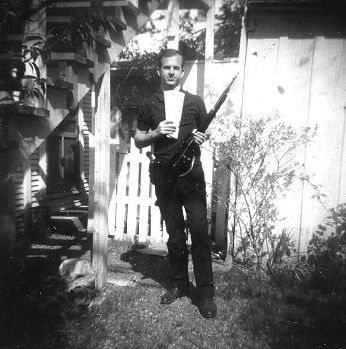  | 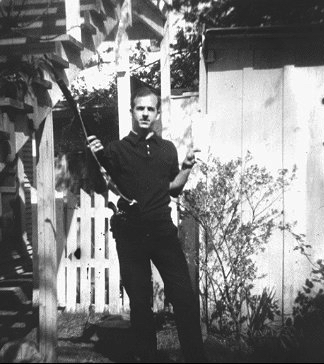  |
According to Marina Oswald, the backyard photos were created to be submitted to the Socialist Worker’s Party newspaper The Militant:
Mrs. OSWALD. ... it happened just before he went to shoot General Walker. Then, I asked him why he was taking this silly picture and he answered that he simply wanted to send it to the newspaper.
Mr. LIEBELER. The Militant?
Mrs. OSWALD. The Militant.
Mrs. OSWALD. I didn't attach any significance to what he said at the time, but he added, "That maybe some day June will remember me." He must have had something in his mind – some grandiose plans. (WC July 24, 1964)
If Oswald’s primary concern was to ingratiate and associate himself with The Militant, then a backyard photo would surely had the opposite effect. The firearms plus the ideological contrast of the two papers would have signaled Oswald as unhinged and confused rather than a reliable warrior for the cause. The photo would have revealed Oswald as some sort of provocateur and potentially compromised his upcoming activity for the Fair Play For Cuba Committee. 25
Oswald contacted the Fair Play for Cuba Committee in mid-April, claiming he had leafletted in Dallas with a pro-Castro placard around his neck, and requested more pamphlets. A notation on Oswald’s letter indicates that 50 of what Oswald described as “fine, basic pamphlets” were sent to P.O. Box 2915 on April 19 (Lee Exhibit 1).
Oswald left for New Orleans on April 24. The Warren Commission, using the testimony of Marina Oswald and Ruth Paine, explained this as a response to desperate unemployment. Oswald had been out of work for less than three weeks, and it is not clear that the reasons for his leaving Jaggars-Chiles-Stovall were exactly that implied by his supervisors. 26
Oswald contacted the Fair Play for Cuba Committee from New Orleans on May 26. He requested formal membership in the organization: “I have been thinking about renting a small office at my own expense for the purpose of forming a F.P.C.C. branch here in New Orleans.” He desires information on “buying pamphlets in large lots, as well as blank FPCC applications ... a picture of Fidel, suitable for framing would be a welcome touch” (Lee Exhibit 2).
In Dick Russell’s book, Richard Nagell emphasized Oswald was not trying to “penetrate” the FPCC: “His involvement with the Fair Play for Cuba Committee in New Orleans was something entirely different. There was no chapter of the committee that he was associated with, not in reality. It was a ploy.” Former New Orleans CIA agent William Gaudet would tell Russell: “I don’t think (Oswald) knew exactly what he was distributing ... (with) the Fair Play for Cuba deal, which was nothing but a front and was one of the dreams of – I think Guy Banister.” 27
When Oswald arrived in New Orleans, the Fair Play for Cuba operation was already active, the first contact made in mid-April, suggesting his association with Banister had been arranged while Oswald was still in Dallas. The intrigue of March and April 1963 – which includes the fast friendship with the Paines, the ordering of the rifle from Klein’s Sporting Goods, the Walker attempt, the backyard photos, the start of the FPCC activity and the move to New Orleans – is not easily explained by the official record, which relies largely on Marina Oswald’s shifting testimony. Lee Oswald’s activity requires assistance, of which the Warren Report is silent.
On the morning of November 23, 1963 the FBI were in contact with M. Waldo George, who was the owner of 214 West Neely Street. George did not reside at or nearby that address, and his contact with Oswald the previous spring had been limited to three brief occasions. The Warren Commission obtained an affidavit from George dated June 12, 1964.(WCH Vol. XI, p 155) In this affidavit, tenants of the ground floor apartment at 214 Neely Street were identified as Mr. and Mrs. George B Gray. The Grays would have conceivably served as crucial witnesses to this extremely important time period, witnesses who had maybe seen Oswald with his rifle, or witnessed the backyard photo session, seen visitors to the Oswald suite, and who perhaps could verify Oswald’s bizarre activities leading to the Walker attempt (as described by Marina). A Secret Service Report from December 1963 (CE2189), however, just as the later affidavit, states succinctly: “The Gray family has now moved and Mr. George does not know where they moved to.”
It might be assumed the resources available to the Commission would succeed in locating these potentially crucial witnesses, the Gray family, but nothing appears in the published Report or Exhibits. However, buried inside Commission Document 6 – the FBI De Brueys Report of 8 Dec 1963 – is information from FBI SA Robert E. Wiatt, referring to a November 30, 1963 interview held in Corrigan, Texas with George B. Bray and his wife Clydie. Spelling aside, Mr Bray is clearly the downstairs tenant from 214 West Neely. Bray states: “The OSWALDS were moved into this apartment by a woman who was driving a white station wagon. This woman transported them and their personal belongings.” 28 While Bray claims there was little contact with the new neighbors, as he and his wife both worked full time, he does recall an astonishing detail: “OSWALD and his wife often quarreled loudly and on occasions these quarrels occurred in the presence of an unknown male visitor who utilized the back stairs to visit the OSWALDS. This man is described only as white male having a chunky build.” (CD6, p. 57)
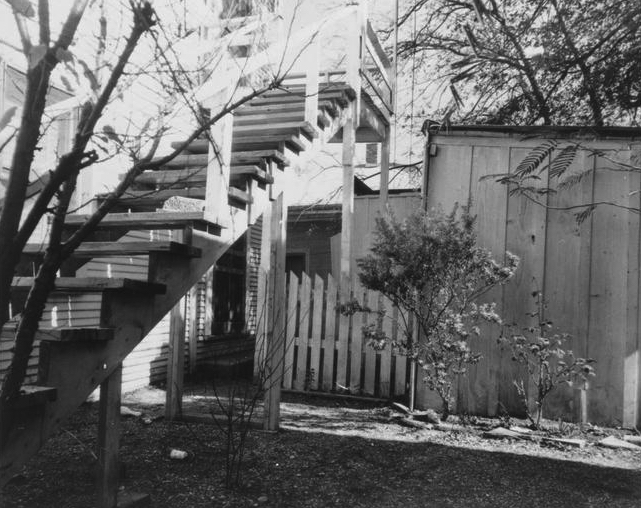  |
| “An unknown male visitor who utilized the back stairs” |
A man with a “chunky build” does not square with the known visitors to the West Neely apartment. 29 This man “utilized” the back staircase, which suggests furtive behavior, and he did so more than once (“on occasions”). He is not a casual acquaintance, as he is present during Lee and Marina’s quarreling. These quarrels may have had something to do with this man. Despite this information, there is no record of any follow up with the Brays (Grays). Marina Oswald is never asked during her Warren Commission testimony if she could identify the “chunky” man who arrived up the back stairs and was present during quarrels with her husband. All that appears in the published record is an acknowledgment that there were downstairs tenants at 214 West Neely, who had since moved. This can be understood as a deliberate omission on the part of the Warren Commission, as the staff counsel were well versed in the contents of the Commission Documents.
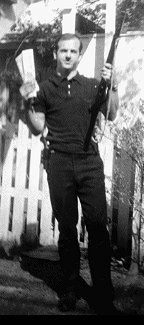  |
Within this atmosphere of intrigue and furtive acquaintance, it is possible to envision a backyard photo session, featuring Oswald and arranged by an as-yet unknown person or persons. With both neighbors working full-time, using the back staircase Oswald and persons unknown could have accessed the backyard, taken three or more photos, and returned to the second-floor apartment without attracting undo attention. This could have happened on a weekday, such as Thursday April 11, 1963, when Ruth Paine shuttled Marina and June Oswald to a visit at her home in Irving. Following this reasoning, the persons unknown could have brought black clothing, the weapons, and the camera with them. The purpose of the photos could have been related to the Walker incident, which would have occurred the previous evening, or for the upcoming provocation involving the Fair Play for Cuba Committee. The backyard photos are not random snapshots, as Oswald’s presentation featured deliberately selected clothing, weapons, and literature. The context of the backyard photos may relate to the intrigues of March/April 1963, and were later appropriated for the patsy operation.
The Neely Street duplex sat empty for a few months later in 1963. This presents a possibility the backyard photos were created at a later date, with the intent of superimposing Oswald’s face atop someone else’s body. The argument against this, noted by the HSCA photography panel, due to the technical skill required to produce a composite which did not give itself away too obviously, purported forgers would have been content creating one single photo. It is difficult to understand why the Imperial Reflex camera would not also have been stashed within Oswald’s seabags, as the two forged photos must have been. Instead, the camera’s insertion into the record was awkward and required questionable and uncorroborated information from Irving policeman John McCabe.
There is nothing uniquely incriminating within the backyard photos, and they were not absolutely necessary to the posthumous prosecution of Oswald. For the Warren Report, paper trails trace the mail order firearms to Oswald’s postal box, and paper trails to CPUSA and SWP establish Oswald’s Marxist bona fides. The backyard photos are invoked as secondary confirmation of Oswald’s guilt, but their true influence is marked by their power and value as a photographed image. 30 The backyard photos, whether forged or retrieved from another operation, were placed with Oswald’s belongings for the purpose of public dissemination.
The introduction of a backyard photo to the Dallas police on Friday night November 22, 1963 was probably not planned and may have been a response to Oswald’s survival, also not planned. The Friday photo may have served the purpose of convincing key personnel of the Dallas police and other investigators that Oswald was the assassin, as Curry, Wade, and Fritz insisted he was during statements to the media when no evidence to support this claim otherwise existed and Oswald proclaimed his innocence.
Accepting that the backyard photos were not taken by Marina Oswald, and that the Imperial Reflex camera was not owned by Oswald, and accepting that the photos are genuine, it follows that whoever was responsible for these photos was known to Oswald, was known to Ruth Paine, had something to do with the Walker “assassination attempt”, and had a hand in setting up Oswald as the patsy for the Kennedy assassination.
Notes
1 This is assuming the backyard photos are “genuine”. If the backyard photos are instead composites, then “who took the pictures” could be rephrased as “who faked the pictures.”
2 This is how film can be understood as a sort of language, and why these early cinema experiments were influential to 20th century linguistics and similar disciplines. The advertising industry implicitly understands the Kuleshov Effect, and it can be witnessed in full effect many times everyday.
3 The phrase “hunter of fascists” appears on the back of the de Mohrenschildt version of 133-A. Who wrote it and when is not known.
4 Bobby Brown, the officer seen in the recreation pose, later told researchers that he was given instructions on how to pose by the Secret Service. See First Day Evidence (Gary Savage), or “Bobby Brown And Oswald’s Ghost(s)” (John Johnson, The Fourth Decade, Volume 5, Number 1).
5 Testimony of Robert Lee Studebaker, 5 Oct 1978 (http://www.maryferrell.org/
6 For an example of Oswald’s dogmatic thought patterns, see Aline Mosby’s notes from her meeting with Oswald in Moscow November 1959 (CE1385).
7 As noted by John Newman: “The mail to and from (Oswald’s) address during this period is so unusual for Texas that Oswald was probably watched closely ... His mail was so radically left wing that he could have expected to be the subject of FBI scrutiny” (Oswald and the CIA, Chapter 15). The Socialist Workers Party was listed as a subversive organization. Oswald never appeared on any security index even as persons with far less radical contact did.
8 Oswald professed dismay and disappointment with the Soviet Union, but his life in Minsk represented the high point of his short life. He received a good salary, he had friends and girlfriends, a nice apartment, and was not prone to the introverted secretive behavior seen on his return to America.
9 Gary Taylor would serve as Oswald’s driver for about a month, shuttling him to several homes associated with the Dallas White Russian community, for visits with Marina. Oswald would also visit the Taylor apartment, where he and Gary Taylor would engage in political debates (CD60, pp. 3-6).
10 Coz-I-Eight Apartments 1306 North Beckley; 604 Elsbeth; 214 West Neely; 621 North Marsalis (the Bledsoe rooming house); 1026 North Beckley. see The Cozy Eight Apartments (R.F. Gallagher, The Fourth Decade, Volume 5 Number 1). During a March 3, 1964 FBI-led tour through the neighborhood, Marina Oswald had the rooming house at 1026 North Beckley pointed out at her request. She stated “she had often seen this house because it was situated near a bus stop which she and her husband had used” (CE1838). Lake Cliff Park, mentioned in Marina’s testimony several times, also by Ruth Paine, is within walking distance of these addresses. Oswald’s denouement on 11/22/63, from the North Beckley rooming house to the Texas Theater, played out, for him, on very familiar turf.
11 Apartment 2, 604 Elsbeth was the address provided to the Warren Commission by the landlord M.F. Tobias. Oswald himself would refer to 602 Elsbeth (CE427), or 602 Elsbeth, Apt 2. On file at the 112th Military Intelligence group in San Antonio, cross linked to file name AJ Hidell, “Harvey Lee Oswald” was listed as residing at 605 Elsbeth. “Harvey Lee Oswald” with address “605 Elsbeth” was the first name which appeared on DPD Lieutenant Jack Revill’s Texas School Book Depository employee list, drawn up early on the afternoon of November 22, 1963.
12 P.O. Box 2915, the postal box which A Hidell allegedly used to receive the murder weapon of JFK, was therefore also the postal box for communications from the Oswalds to the Soviet Embassy in Washington from the beginning of 1963 through the 17th of May, when a change of address card was sent from New Orleans. All communications and subscriptions to and from socialist organizations were also received at this PO box. How a mail-order rifle, addressed to an A Hidell, could arrive at a PO Box which also hosted activity from the Soviet Embassy and communist/socialist newspapers, without any alert or notice generated, is inexplicable.
13 See Peter Dale Scott, Deep Politics and the Death of JFK, Chapter 15, “Oswald as an Informant for the Government,” and Chapter 16, “Oswald as a Double Agent for Hoover.”
14 Richard Nagell, also known to use the Hidell alias, and who may have been Oswald’s “control agent” for American intelligence or Soviet intelligence or both, was in Dallas in October 1962 as Oswald first dropped off the radar, and also in February and April 1963.
15 See the Volkmar Schmidt interview with researcher Bill Kelly. Schmidt told Kelly this meeting came about because he “wanted to study Russian.” Ruth Paine would say essentially the same thing about her desire to meet Marina Oswald, and the same motivation was used to explain a mysterious visit to the Paine residence in Irving a few days ahead of the assassination by Col. J. D. Wilmeth.
16 Schmidt’s account was not made contemporaneously; it was first aired in Edward Epstein’s 1978 book Legend: The Secret World of Lee Harvey Oswald. Beginning in the early 1990s, at the time of the release of Oliver Stone’s JFK, Schmidt, along with Michael Paine, began making appearances on mainstream television documentaries espousing a lone-nut analysis of Oswald.
17 Michael Paine would not attend this event due to a “cold”.
18 Marina specifically says that she and her daughter would return to Leningrad while her husband would stay in the United States. Marina sends another letter dated March 17, with a questionnaire received from the Embassy filled out. On April 18 the Embassy responds cautiously, suggesting she travel to them for an interview. On May 15 the Embassy was sent a change-of-address card switching the Oswald’s address from Box 2915 Dallas to Magazine St in New Orleans. In the next letter, dated July 1st, Lee Oswald is now included as part of the request to return to the Soviet Union. Marina claims their lives are hard, and incorrectly states her husband is “often unemployed” (Oswald had been unemployed for four days the previous October, and for about three weeks in April). For his part, Oswald allows, in an included hand written letter, that the visas for his wife and himself could be considered “separately.” A response comes in August, then no activity until November 1, when a change of address card is sent to switch from New Orleans to a new Dallas P.O. box. The next day, a bizarre typewritten letter which describes a Mexico City meeting with “comrade Kostin”, is mailed to the Embassy. The letter is postmarked November 2, but dated November 9. Previous communications from both Lee and Marina were handwritten (CE986).
19 Jeanne de Mohrenschildt, WC testimony, April 24, 1964.
20 Oswald’s calm demeanor under pressure was observed during the street confrontation in New Orleans August 1963, and during his interrogations after the assassination. Richard Nagell: “Let me tell you, he was a cool customer.” Michael Paine: “I think Lee knows how to keep his temper, knows how to control himself.”
21 The Walker surveillance photo in question was determined, by the presence of a building under construction in its background, to have been photographed somewhere between March 8-12, 1963. Oswald was working at Jaggars-Chiles-Stovall every one of those days from morning to late afternoon with the exception of March 10.
22 The Schmidt brothers are not related to Volkmar Schmidt. A second-hand story told to Russell in The Man Who Knew Too Much has Oswald hanging with Larrie and Bob Schmidt, drinking heavily, calling out Walker as a “no good son of a bitch” and then, on Oswald’s suggestion, retrieving his rifle and driving to the general’s home to take a pot shot. It is difficult, at face value, to believe a committed ideologue such as Larrie Schmidt would put all his endeavors at risk committing a capital crime on a drunken whim.
23 Deutsche National-Zeitung und Soldaten-Zeitung, November 29, 1963. A reporter in the hallway of the Dallas Police Department asked Jesse Curry on Saturday November 23 about the possibility that Oswald may be connected to the Walker attempt the previous spring. Curry said he had no information. The context by which the reporter formulated the question is not known. The Munich newspaper’s story of communist Oswald revealing his true nature and loyalties ahead of the JFK assassination, has similar intentions to published stories generated by members of the DRE in Florida and New Orleans.
24 Oswald had been using Dallas post office box 2915 for his mail, but there does exist a change of address form dated March 6, 1963, switching from Elsbeth to West Neely. The envelope containing Marina’s first letter to Ruth Paine (with the map of the new address), did had a return address: 214 Neely St., postmarked March 8 (CE404-A). The FBI’s Hosty obtained the Neely address on March 11 from a source at the Dallas Post Office. Gary Taylor said his source was the Elsbeth Street landlords. Oswald’s change-of-address form sent from New Orleans on May 12, 1963 lists his old address as P.O. Box 2915 (CE794).
25 Gus Russo would claim in his book Live By The Sword that interviews he conducted in 1993 with former employees from The Militant confirmed that a backyard photo was sent to the paper and caused consternation. “After the assassination, Farrell Dobbs directed that the photograph, together with ‘every scrap of paper’ mentioning Oswald, including his subscription plate, be swept from the files and given to William Kunstler ... ” (Live By The Sword, endnotes p. 537). In fact, Dobbs, the National Secretary of the Socialist Worker’s Party, publisher of The Militant, brought all existing communications to and from Lee Oswald with him to his Warren Commission testimony, whereby they became Commission Exhibits. Dobbs approached his Commission testimony carefully, appearing with legal counsel. It is hard to imagine a backyard photo, or any other artifact from Oswald, being deliberately withheld from the Commission as the potential repercussions would be great, and there would be reason to suspect an informant might already have reported the receipt of such a photo. No legal counsel for Dobbs would have advised anything but full disclosure. An informant had reported details of a “closed membership meeting” of the SWP held November 27, 1963 during which responses to Oswald’s connections to The Militant and the SWP were discussed with concern, and no photo was mentioned (CE2213).
26 Oswald wrote to his brother in mid-March, describing success developing his photography skills at J-C-S, and claiming he was in line for a raise. Testimony to the Warren Commission by Oswald’s immediate supervisor John Graef and by the firm’s owner Richard Stovall suggest that Oswald was let go because he had no aptitude for the job. Noting that Oswald frequently volunteered for Saturday overtime shifts, Graef stated: “his work didn't come up to the quality that we needed so it was very, very seldom that we ever brought him in unless we ... had an urgent work that absolutely had to go ... ” But Oswald worked every Saturday in the month of March, and also Saturday April 6, his final day at the firm after being let go, supposedly, for his poor work. The Warren Commission published, as Exhibits, the J-C-S timecards which show these six-day weeks (CE 1855/1856).
27 Dick Russell, The Man Who Knew Too Much, Chapters 15 & 17.
28 This description cannot help but bring to mind Ruth Paine. If it was, then for an unknown reason this activity was never mentioned in her testimony, or in the testimony of Marina Oswald. Marina holds that she and Oswald moved themselves on foot. If this was Ruth Paine, then the card Marina sent her five days later with a map to the new address becomes odd (CE404-A). It may have been a member of the White Russian community. In a discussion of this on the Education Forum list, researcher Greg Parker notes the descriptive similarity between the white station wagon seen by Gray, and the “white Nash Rambler station wagon” seen by Roger Craig outside the Texas School Book Depository in the immediate aftermath of the assassination. Craig’s observation was supposedly met by a response from Oswald: “That’s Mrs Paine’s car, you leave her out of it.”
29 Speculatively, this person could range from Richard Nagell to the FBI’s James Hosty to Jack Ruby, or someone unknown. Nagell was in Dallas in April 1963, in part to monitor Marina Oswald. Nagell said of Marina: “I’ve seen her but never met her. There is the possibility she has seen me with other people.” On January 18, 1964, Marina Oswald was interviewed for two hours by Secret Service SA Jamison “re Richard Case Nagell” (CD 379, p. 6).
30 If the backyard photos were faked, it means that all items within the photo were deliberately chosen by the forgers. The odd inclusion on the Oswald figure is then the pistol. It invokes the Tippit slaying, but how could the Tippit slaying be anticipated months ahead? Perhaps a shootout with the pistol-carrying assassin was the anticipated event.


